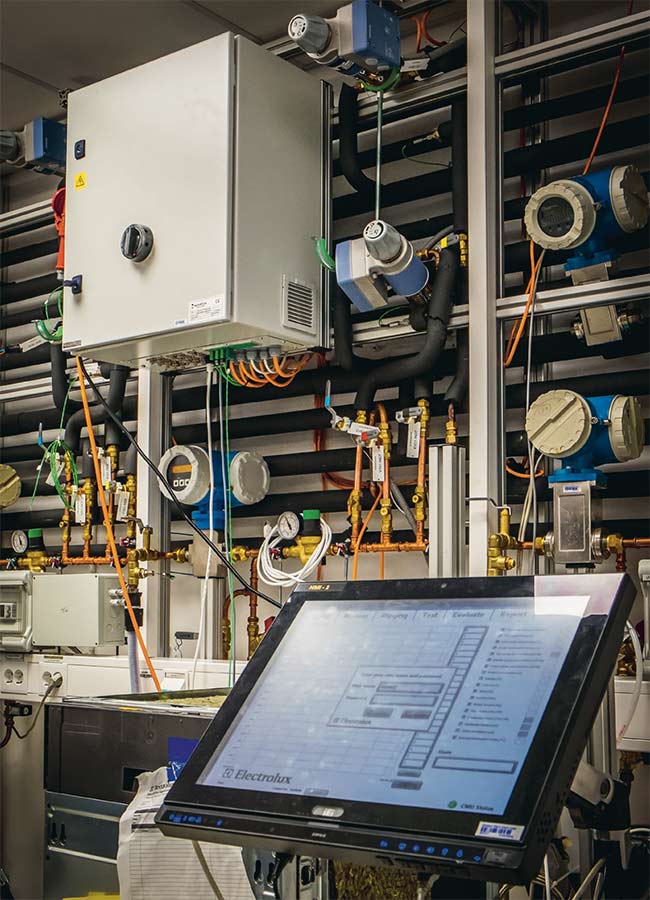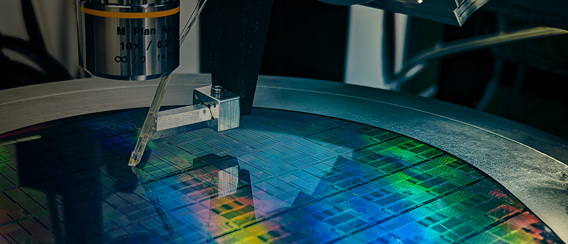Performance Test Lab for Electrolux Dishwasher
Case by Novator Solutions (Swedish NI integration partner)

Challenge
Electrolux Global R&D Dish Care department has struggled with a low throughput in their dishwasher performance test lab and needed a new, highly reliable system to replace their old.
Solution
A turnkey solution based on LabVIEW™, NI CompactRIO™ with FPGA for hardware control, panel PCs for in-lab control of tests, a PC client for setup and analysis of tests and a web service connection to local and global databases for storing test data and system parameters.
Introduction
Electrolux Performance Lab for dishwashers needed to upgrade their product testing software for improved performance, spare parts availability, reliability and features. A decision was made to create a completely new test platform with such versatility, modularity and extensibility that it would be a viable candidate for being used as the global test platform for all Electrolux test labs in the long run.
About Novator Solutions
Novator Solutions excels in LabVIEW, and is highly skilled in developing test, measurement, and control systems. As a Gold Alliance Partner Novator Solutions works closely with National Instruments, and has extensive experience on NI hardware and software platforms, especially LabVIEW, TestStand™, and VeriStand™. Novator Solutions consultants have more than 100 years of combined experience with these tools. Novator Solutions works as consultants in customer projects or as suppliers of complete turn-key solutions, including mechanics, electronics, assembly, installation, maintenance, and support.
The Solution – Electrolux Test Platform
The system is developed in LabVIEW although the database web service is developed in .NET.
The system consists of several parts:
- A cabinet housing the CompactRIO (cRIO) and other equipment, connectors and electric components.
- A Panel PC running the interface (HMI), used for setting up a dishwasher for test and performing the test.
- A PC client running the Electrolux Test Platform tool (ETP Tool) for system setup, monitoring of live data from the test stations, and analysis of tests.
- An Evaluation station (EVA) for evaluation of the dish cleaning outcome.
- A local database for storing the test data and a global database for distributing the test data to other users in other labs.
cRIO runs LabVIEW on a real-time (RT) platform. It also houses an FPGA responsible for collecting data. This is a very fast, flexible and reliable environment for developing data acquisition and control systems and is often used in Novator Solutions test systems. The FPGA code is developed in LabVIEW as well.
The solution is a distributed system communicating over TCP/IP and web services. The HMI connects as a client to cRIO, acting as a server and gets the test data in raw format. It converts the data for presentation and also communicates with the database using the web service for both storing data and publishing it live on the HMI. The ETP Tool runs on a standard PC or laptop and is used for setting up the test object, planning the tests, monitoring live data and analyzing the test results. For remote control of the tests the ETP Tool connects as a client to the HMI. The ETP Tool also makes use of the web service for communication with the database and for receiving live data from the HMI. The evaluation station EVA runs on a panel PC and also uses the web service for storing the evaluation results to the database.
Why LabVIEW?
Why use LabVIEW for the Electrolux Test Platform? Studies show that the developing time is significantly reduced using a graphical environment. Novator Solutions uses an object-oriented program design, which results in very robust and easily maintainable code. In this project several developers have worked concurrently on creating the system, adding on to each other’s code without any problems. The fact that the desktop the real-time and the FPGA applications all can be developed in LabVIEW speeds up the developing process.
The Electrolux Performance
Test Lab consists of 8 test stations with CompactRIO units and HMIs, a local database, and clients connected running the ETP Tool. On the other side of the firewall is the global database. The system is designed so that more labs can connect and share data via the global database.
The image below shows the ETP Tool. Interface for editing test project information.

Conclusion
The Electrolux Test Platform is implemented in the test lab at Electrolux and the test personnel has started using the system. They are very satisfied with the ease of use of the system. It also meets the requirements set for the project. It has built in functionality for ensuring that data is not lost; in the old system this was a major problem. The test yield and the system availability are high. Electrolux owns the code which means they are in full control of making changes and they now have a system that is flexible, modular and expandable. Electrolux already has plans to use the platform in other labs, perhaps even in other countries in the future.

